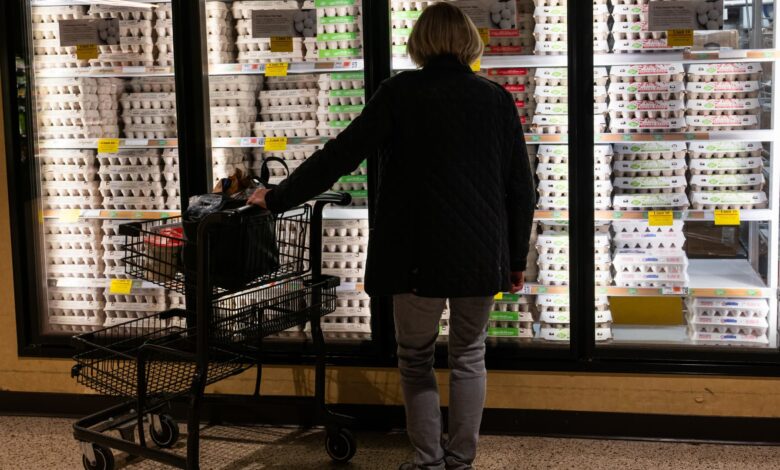Here’s the inflation breakdown for May 2025 — in one chart

The latest data from the Bureau of Labor Statistics shows that the annual inflation rate saw a slight increase in May. This uptick was mainly due to higher grocery prices, which offset the lower prices at the gasoline pump. Despite this, economists are warning that President Trump’s tariff policies could lead to higher consumer prices in the coming months.
In May, the consumer price index rose by 2.4% over the last 12 months, up from 2.3% in April. While this may seem like a modest increase, economists are keeping a close eye on the potential impact of tariffs on consumer prices. Mark Zandi, chief economist at Moody’s, believes that we are currently experiencing the “calm before the inflation storm,” as the full effects of the tariffs have yet to be felt.
One area where tariffs have already had an impact is in energy prices. Gasoline prices fell by almost 3% from April to May, largely due to falling oil prices. This downward trend in energy prices has also affected other sectors, such as transportation and airfare, which have seen decreases in prices as well.
However, not all sectors have seen price decreases. Grocery prices, for example, rose by 0.3% in May, after a 0.4% decrease the previous month. This increase in food prices is a cause for concern for economists like Zandi, who believe that it could signal a broader trend of rising prices in other sectors.
Despite these potential inflationary pressures, there are still factors at play that are keeping inflation in check. Supply chains are healing, and the labor market is showing signs of weakness, both of which have helped to rein in inflation. Additionally, housing inflation has moderated, which is a positive sign considering that housing is the largest component of the consumer price index.
Overall, economists are cautiously optimistic about the future trajectory of inflation. While there are concerns about the impact of tariffs on consumer prices, there are still disinflationary factors at play that are helping to keep inflation in check. As we move forward, it will be important to monitor how these competing forces ultimately shape the inflation landscape in the months to come. The world of fashion is constantly evolving, with new trends emerging every season. Designers are always looking for fresh ideas to keep their collections current and exciting. One trend that has been gaining popularity in recent years is the use of sustainable materials in fashion.
Sustainable fashion is a growing movement that focuses on creating clothing and accessories in an environmentally and socially responsible way. This means using materials that are produced in a way that minimizes harm to the environment, as well as ensuring fair labor practices throughout the supply chain.
One of the most popular sustainable materials in fashion is organic cotton. Unlike conventional cotton, which is grown using large amounts of pesticides and synthetic fertilizers, organic cotton is grown using natural methods that have minimal impact on the environment. It is also often produced by small-scale farmers who are paid fair wages for their work.
Another sustainable material that is gaining popularity is recycled polyester. This material is made from recycled plastic bottles, which helps to reduce the amount of plastic waste that ends up in landfills or the ocean. Recycled polyester has the same properties as virgin polyester, making it a versatile and durable option for clothing and accessories.
In addition to using sustainable materials, many fashion brands are also focusing on reducing waste in their production processes. This can include using leftover fabric scraps to create new garments, or repurposing old clothing into new designs. By reducing waste and recycling materials, these brands are able to minimize their environmental impact and create a more circular economy.
Consumers are also becoming more conscious of the environmental and social impact of their clothing choices. Many people are choosing to support brands that prioritize sustainability and ethical practices, leading to a shift in the fashion industry towards more responsible production methods.
As the demand for sustainable fashion continues to grow, more and more brands are embracing this trend and incorporating sustainable materials and practices into their collections. By choosing to support these brands, consumers can help to drive positive change in the fashion industry and protect the planet for future generations.





